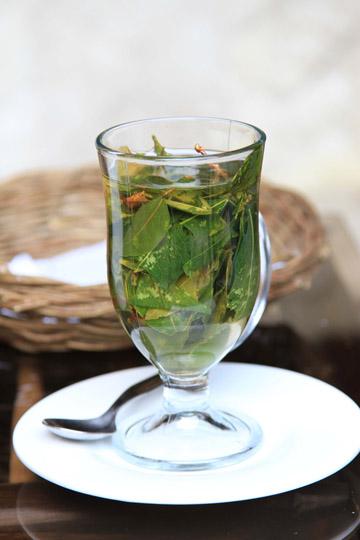Cocktail of the WeekSeptember 6, 2012
By • September 6, 2012 0 1027

On a bitter and chilly night, nothing soothes the soul quite like a toasty warm cocktail. Cold days are not the norm in Washington during August and September, but I spent the majority of this summer in the winter of the Southern hemisphere, where I experienced plenty of recent nippy winter evenings that were heated up with a hot toddy.
In Cusco, Peru, the days are filled with brilliant blue skies and powerful rays of sun due to its altitude of over 11,000 feet in the Andes. Once the sun goes down, the historical city center is illuminated with golden streams of floodlights, and the mercury drops to a brisk spot in the low 50s. While the tourist bars and salsa clubs near Plaza des Arms and San Blas get packed with party-goers downing pisco sours and Cusquena beers, my friend Suzanne introduced me to a mellow locals-only spot tucked away on a side street where we quenched our thirst and warmed our spirits with a steaming pitcher of coca tea and pisco.
This combination blends two of the most popular beverages in Peru. Coca tea or mate de coca, is an herbal tea brewed with leaves from the coca plant, which is grown throughout Northwest South America. The tea can be made by steeping raw coca leaves or commercially made tea bags in boiling water. This Andean beverage has an earthy flavor similar to green tea but with a sweeter finish.
The beverage has many beneficial effects. It is often recommended to combat the effects of altitude sickness. During my months in the Andes, I found no matter what my ailment ? cough, sore throat, hangover ? the locals would convincingly advise me, ?Drink coca tea!? Or, you can skip the drinking altogether and just chew on the raw coca leaves like many native Andean people do.
The tea also works as a stimulant, for it is brewed from the same leaves that are used to make cocaine. Hence, it is illegal to import or sell in the U.S., although I found a few websites, including Amazon.com, where the tea bags were available.
Pisco, which is the national drink of Peru, is a clear white spirit distilled from grapes that dates back to the 16th century. It is considered a brandy and has a distinctive grape flavor.
According to SouthAmericanFood.com, there are numerous explanations for how this brandy got its name. Some say that the word comes from the Quechuan word ?pisqu?, which was the name of a bird found in the Inca valley region of Peru. Another theory is that it is named after the town of Pisco, a port city where pisco was shipped to Lima as well as popularized by sailors. The name is also said to come from the large pre-Colombian clay pots, called piscos that are used to ferment the grapes.
When mixed together to make ?Te Macho? the coca and pisco combination results in a steamy yet potent tipple. Not being one who likes sugary cocktails I found this drink to be delightfully refreshing. The homey and robust tea combines brilliantly with the subtle sweetness and woodsy spice of the pisco.
Soon after my excursion with Suzanne, I discovered that the pisco and coca tea formula was a popular way for locals to enjoy their national beverage and stay snug in their unheated homes. I spent many frosty evenings in the rural town of Huasao sipping pitchers of te macho with my Shaman, Illapa, his brother, Fernando, and their various followers. This easy-going down-to-earth punch, along with the company, had such a comforting and uplifting effect, that soon I felt like I had a home away from home.
**Te Macho**
2 cups pisco
3 cups boiling water
4 bags mate de coca tea
Add two cups of pisco to heatproof pitcher. Add two cups of boiling water. Step tea bags until the liquid turns a yellowish green color. Serve hot and garnish with coca leaves (if available) Serves 5.

